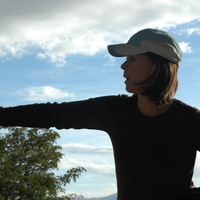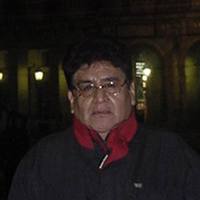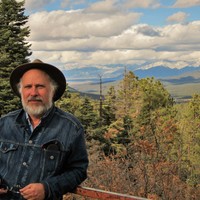
Tom Dillehay
Related Authors
Tiffiny Tung
Vanderbilt University
Steve Goodbred
Vanderbilt University
Victor F. Vásquez Sánchez
Universidad Autónoma de Madrid
Helen Roe
Queen's University Belfast
FX Anjar Tri Laksono
Jenderal Soedirman University
charles fletcher
University of Hawaii








Uploads
Papers by Tom Dillehay
calibrated [cal] B.P.) humans at coexisting mound sites (Huaca
Prieta and Paredones) in north coastal Peru and document regular
consumption of maize by ∼6,500 to 6,000 cal B.P. and its earliest
use as a staple food in this area of the Andes between 5,000 and
4,500 cal B.P. Stable isotope data from enamel carbonates and
dentin collagen (childhood diet) and dental microwear texture
analysis (adult diet) demonstrate dietary and economic specialization.
Previous studies revealed maize and mixed-food refuse at
both sites, but this study documents actual food consumption,
showing that these communities situated a few hundred meters
apart had significantly distinct diets in childhood and adulthood.
Huaca Prieta focused on marine resources, although there are
some contributions from terrestrial meat. Paredones individuals
primarily consumed maize during childhood (up to 70% of the
juvenile diet), as shown by δ13C values, apatite-collagen spacing,
and discriminant analysis of δ13Ccoll, δ13Ccarb, and δ15N values.
Maize was likely used as a weaning food (e.g., gruel and/or
chicha—a maize beverage), hinting at the significant role of
breastfeeding mothers, weanling infants, and children in the development
of maize as a staple crop. Additionally, dental microwear
data show Paredones adult diets are high in abrasives,
potentially from maize processing. The distinct foodways at these
neighboring sites result from and also reflect their social and political
distinctions. These differences in food production, distribution,
and consumption generated opportunities for exchange, an
interaction that bound them together in mutual benefit.
Tom D. Dillehay
Chapter 3.7 The Pacific coast and Andean highlands/ Amazonia 221
Tom D. Dillehay, Brian McCray and Patricia J. Netherly
important, and debated, sites for understanding of
the early peopling of the Americas. The authors present
43 radiocarbon measurements based on cores of
sediments that overlie the archaeological deposits
adjacent to the site. Statistical analysis of these dates
narrows the deposition of the earliest sediments sealing
the occupational layer to c. 14 550 cal BP. The
consistency between the dates of the site’s archaeological
strata and its adjacent deposits allows not
only consolidation of the site’s chronology, but also
illustration of how a multi-pronged approach can
inform debates surrounding the peopling of new
lands—in the Americas or elsewhere.
foods and other resources. Compared with the monistic structure of crop
production in many terrestrial parts of the world, some coastlines reflect a
dualistic structure with complementary maritime and agricultural economies
beginning in early prehistoric times. In particular, the Pacific coast of the Central
Andes offers one of the world’s most abundant and diverse supplies of marine
resources. The late Pleistocene to middle Holocene (~14,500–4,000 BP)
cultural sequences from south Ecuador to north Chile vary appreciably from
one region to the next, but all reveal varying degrees of mixed diets of maritime
and terrestrial foods. By at least ~7,000 BP, a diversity of seafood and
domesticated crops were mutually exchanged to form varied specialized
and unspecialized economies in a few Andean areas. This study reports on
interdisciplinary data from a complex of archaeological sites with mixed
economies along the desert coast of the Chicama Valley in north Peru,
specifically the Huaca Prieta area dating between ~14,500 and 3,800 BP.
Around 7,500–7,000 BP, intensified maritime and agriculture economies
developed simultaneously with social differentiation between public ritual
monuments and outlying domestic support sites in an environment of rich
marine resources and fertile estuarine wetlands in the valley. This and other
coastal areas played an important and persistent early role in human population growth, community formation, and the consilience of different but
complementary technologies and principles of socio-economic organization
to establish the foundations for later state development along the Central
Andean coast.
calibrated [cal] B.P.) humans at coexisting mound sites (Huaca
Prieta and Paredones) in north coastal Peru and document regular
consumption of maize by ∼6,500 to 6,000 cal B.P. and its earliest
use as a staple food in this area of the Andes between 5,000 and
4,500 cal B.P. Stable isotope data from enamel carbonates and
dentin collagen (childhood diet) and dental microwear texture
analysis (adult diet) demonstrate dietary and economic specialization.
Previous studies revealed maize and mixed-food refuse at
both sites, but this study documents actual food consumption,
showing that these communities situated a few hundred meters
apart had significantly distinct diets in childhood and adulthood.
Huaca Prieta focused on marine resources, although there are
some contributions from terrestrial meat. Paredones individuals
primarily consumed maize during childhood (up to 70% of the
juvenile diet), as shown by δ13C values, apatite-collagen spacing,
and discriminant analysis of δ13Ccoll, δ13Ccarb, and δ15N values.
Maize was likely used as a weaning food (e.g., gruel and/or
chicha—a maize beverage), hinting at the significant role of
breastfeeding mothers, weanling infants, and children in the development
of maize as a staple crop. Additionally, dental microwear
data show Paredones adult diets are high in abrasives,
potentially from maize processing. The distinct foodways at these
neighboring sites result from and also reflect their social and political
distinctions. These differences in food production, distribution,
and consumption generated opportunities for exchange, an
interaction that bound them together in mutual benefit.
Tom D. Dillehay
Chapter 3.7 The Pacific coast and Andean highlands/ Amazonia 221
Tom D. Dillehay, Brian McCray and Patricia J. Netherly
important, and debated, sites for understanding of
the early peopling of the Americas. The authors present
43 radiocarbon measurements based on cores of
sediments that overlie the archaeological deposits
adjacent to the site. Statistical analysis of these dates
narrows the deposition of the earliest sediments sealing
the occupational layer to c. 14 550 cal BP. The
consistency between the dates of the site’s archaeological
strata and its adjacent deposits allows not
only consolidation of the site’s chronology, but also
illustration of how a multi-pronged approach can
inform debates surrounding the peopling of new
lands—in the Americas or elsewhere.
foods and other resources. Compared with the monistic structure of crop
production in many terrestrial parts of the world, some coastlines reflect a
dualistic structure with complementary maritime and agricultural economies
beginning in early prehistoric times. In particular, the Pacific coast of the Central
Andes offers one of the world’s most abundant and diverse supplies of marine
resources. The late Pleistocene to middle Holocene (~14,500–4,000 BP)
cultural sequences from south Ecuador to north Chile vary appreciably from
one region to the next, but all reveal varying degrees of mixed diets of maritime
and terrestrial foods. By at least ~7,000 BP, a diversity of seafood and
domesticated crops were mutually exchanged to form varied specialized
and unspecialized economies in a few Andean areas. This study reports on
interdisciplinary data from a complex of archaeological sites with mixed
economies along the desert coast of the Chicama Valley in north Peru,
specifically the Huaca Prieta area dating between ~14,500 and 3,800 BP.
Around 7,500–7,000 BP, intensified maritime and agriculture economies
developed simultaneously with social differentiation between public ritual
monuments and outlying domestic support sites in an environment of rich
marine resources and fertile estuarine wetlands in the valley. This and other
coastal areas played an important and persistent early role in human population growth, community formation, and the consilience of different but
complementary technologies and principles of socio-economic organization
to establish the foundations for later state development along the Central
Andean coast.